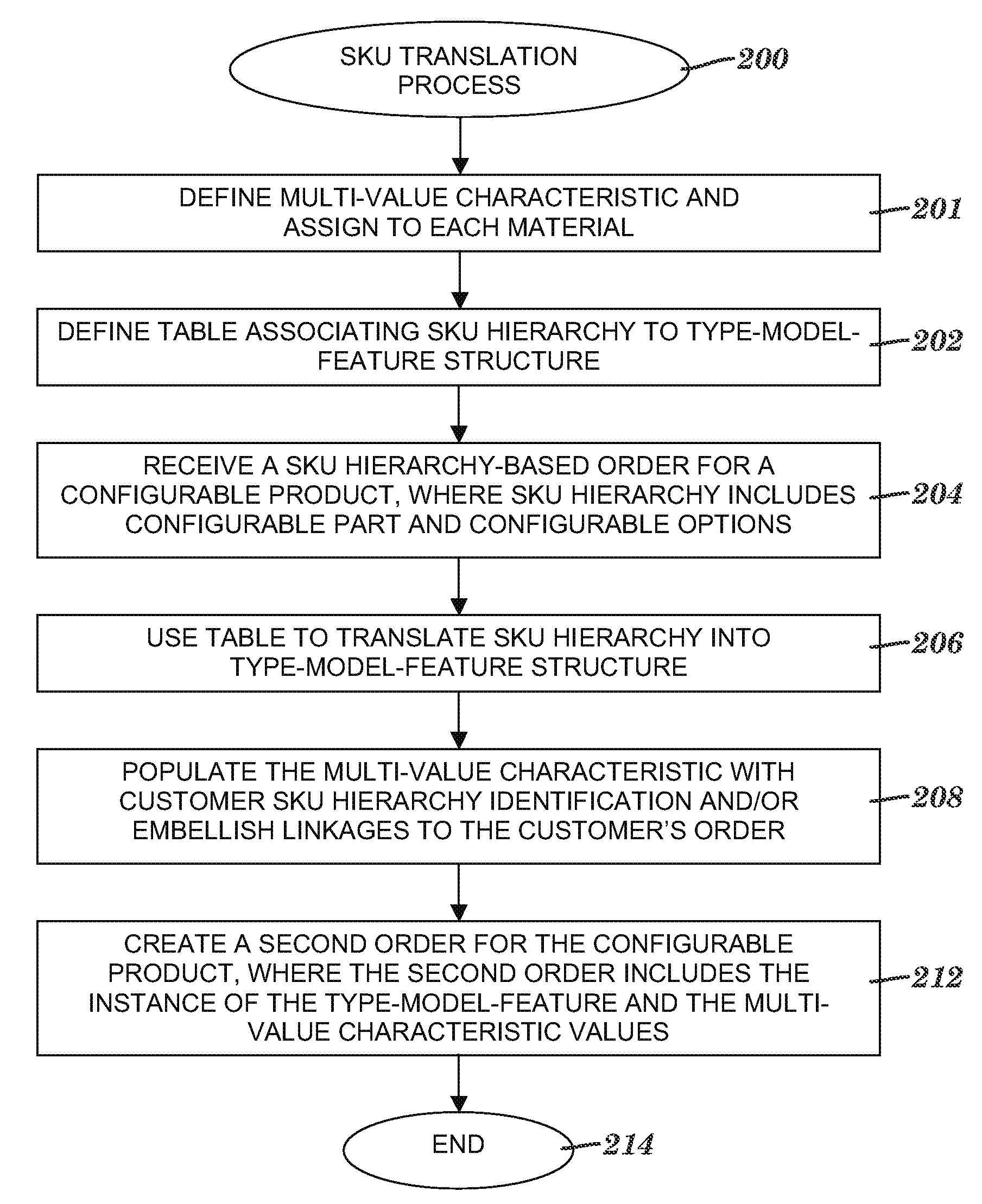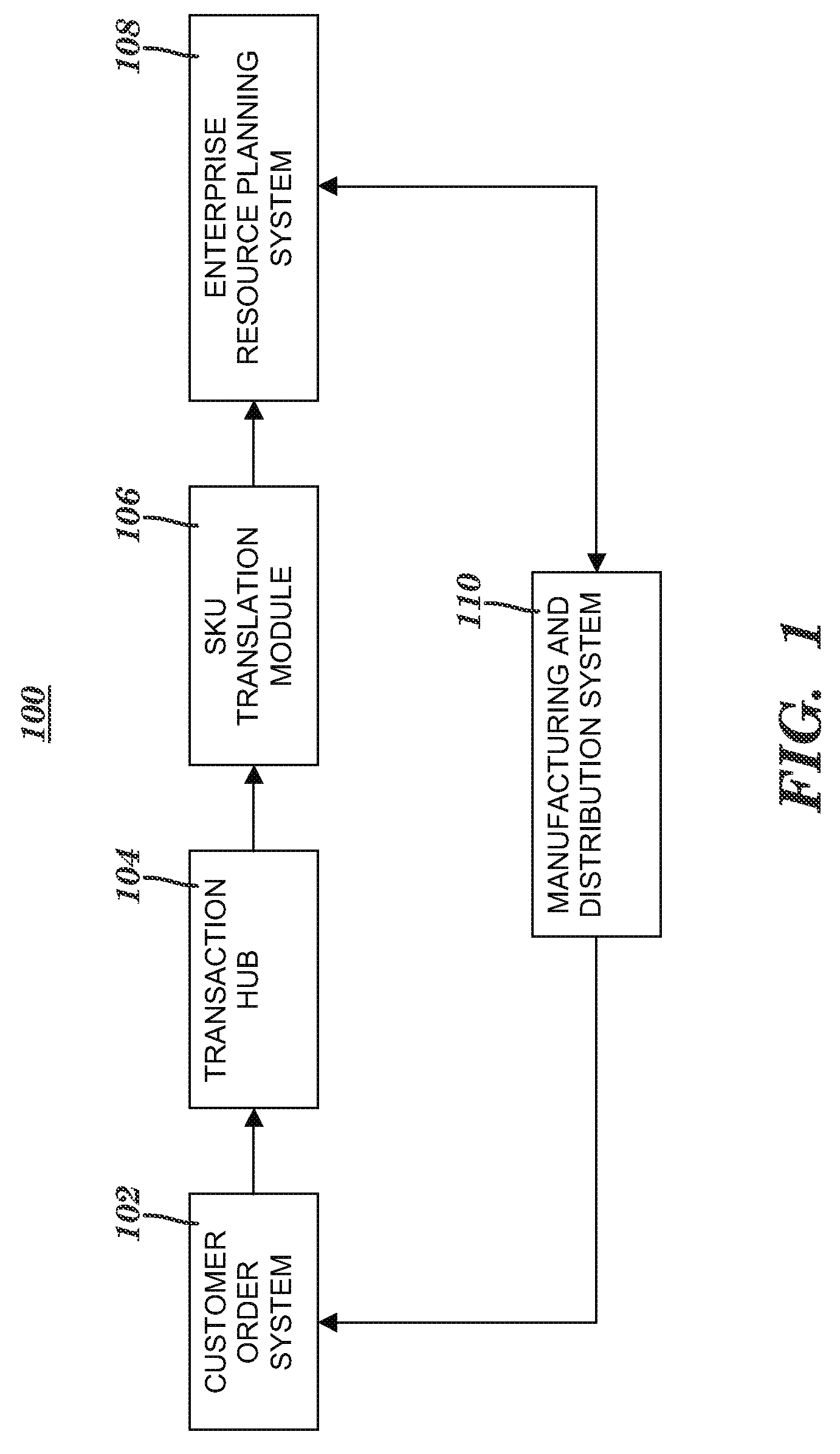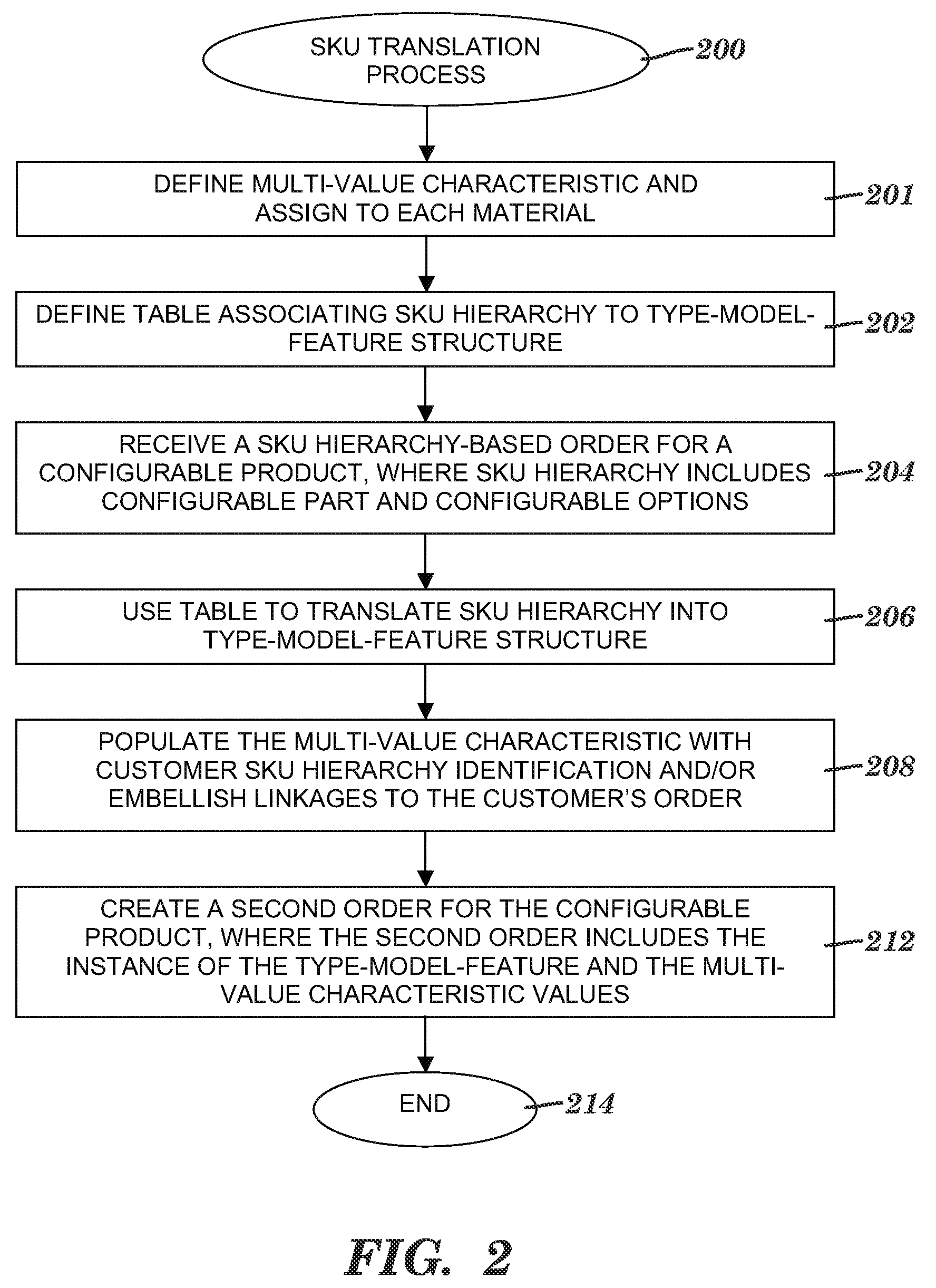Translating an order's stock keeping unit hierarchy to an order fulfillment structure
a technology of order fulfillment and order keeping unit, applied in the field of method and system for translating an order stock keeping unit hierarchy to an order fulfillment structure, can solve the problems of inability to configure products, conventional techniques, etc., and achieve the effects of reducing workload, high quality, and efficient processing
- Summary
- Abstract
- Description
- Claims
- Application Information
AI Technical Summary
Benefits of technology
Problems solved by technology
Method used
Image
Examples
example 1
[0035]In one embodiment, a predetermined qualifier (e.g., 901) is utilized to point to the table associating the SKU hierarchy of the customer order to the vendor's nomenclature. During the inbound order process where the order being processed includes a customer's material entry having the predetermined qualifier, one of the following sets of actions are taken depending on whether the order transaction is identified as being a configurable part, a configurable option or a spare:
[0036]Configurable part: If the transaction is identified as a configurable part, the value of a segment indicator field is set to 01 (i.e., to indicate a configurable part). Table 300 (see FIG. 3) is accessed to collect (1) table line items that are relevant to the Sold-to customer, (2) customer SKU, and (3) all values pertaining to the sales organization and distribution channel. An order line item is populated with the values that pertain to the collected customer SKU. In table 300 (see FIG. 3), the perti...
example 2
[0043]An order is received in step 204 (see FIG. 2) that includes 74—3563—02, a customer's SKU number for a configured product. In step 208 (see FIG. 2), a multi-value characteristic with identifier MK_CUSMAT is populated with the value MOD—74—3563—02—1000, which is a model value with a subline identifier (i.e., 1000). Using the first row of table 300 (see FIG. 3), the 74—3563—02 SKU is translated in step 206 (see FIG. 2) into the vendor's Material code of 8836NEW. Following the translation step, an order is created in the vendor's nomenclature in step 212 (see FIG. 2). The overview of the order is viewed via enterprise resource planning system 108 (see FIG. 1) in a display that lists items ordered (e.g., configurable products and SEOs). In one embodiment, the enterprise resource planning system displays an overview of orders in a table 400 of FIG. 4. In table 400, the row with item 10 includes the Material code of 8836NEW (i.e., a result of the translation step) and presents the ov...
PUM
 Login to View More
Login to View More Abstract
Description
Claims
Application Information
 Login to View More
Login to View More - R&D
- Intellectual Property
- Life Sciences
- Materials
- Tech Scout
- Unparalleled Data Quality
- Higher Quality Content
- 60% Fewer Hallucinations
Browse by: Latest US Patents, China's latest patents, Technical Efficacy Thesaurus, Application Domain, Technology Topic, Popular Technical Reports.
© 2025 PatSnap. All rights reserved.Legal|Privacy policy|Modern Slavery Act Transparency Statement|Sitemap|About US| Contact US: help@patsnap.com



